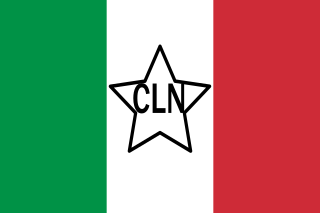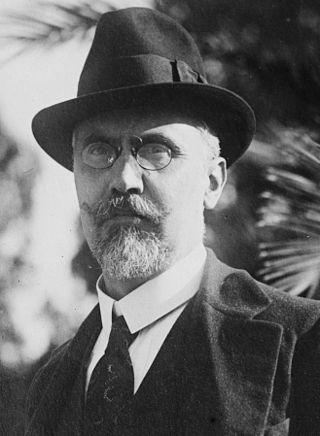
Fascism is a far-right, authoritarian, ultranationalist political ideology and movement, characterized by a dictatorial leader, centralized autocracy, militarism, forcible suppression of opposition, belief in a natural social hierarchy, subordination of individual interests for the perceived good of the nation and/or race, and strong regimentation of society and the economy.
Neo-fascism is a post–World War II far-right ideology that includes significant elements of fascism. Neo-fascism usually includes ultranationalism, racial supremacy, populism, authoritarianism, nativism, xenophobia, and anti-immigration sentiment, as well as opposition to liberal democracy, social democracy, parliamentarianism, liberalism, Marxism, capitalism, communism, and socialism. As with classical fascism, it proposes a Third Position as an alternative to market capitalism.

Alcide Amedeo Francesco De Gasperi was an Italian politician who founded the Christian Democracy party and served as prime minister of Italy in eight successive coalition governments from 1945 to 1953.

The Italian Republican Party is a political party in Italy established in 1895, which makes it the oldest political party still active in the country. The PRI identifies with 19th-century classical radicalism, as well as Mazzinianism, and its modern incarnation is associated with liberalism, social liberalism, and centrism. The PRI has old roots and a long history that began with a left-wing position, being the heir of the Historical Far Left and claiming descent from the political thought of Giuseppe Mazzini and Giuseppe Garibaldi. With the rise of the Italian Communist Party and the Italian Socialist Party (PSI) to its left, it was associated with centre-left politics. The early PRI was also known for its anti-clerical, anti-monarchist, republican, and later anti-fascist stances. While maintaining those traits, during the second half of the 20th century the party moved towards the centre on the left–right political spectrum, becoming increasingly economically liberal.

The Italian resistance movement is an umbrella term for the Italian resistance groups who fought the occupying forces of Nazi Germany and the fascist collaborationists of the Italian Social Republic during the Second World War in Italy from 1943 to 1945. As a diverse anti-fascist movement and organisation, the Resistenza opposed Nazi Germany, as well as Nazi Germany's Italian puppet state regime, the Italian Social Republic, which the Germans created following the Nazi German invasion and military occupation of Italy by the Wehrmacht and the Waffen-SS from 8 September 1943 until 25 April 1945.

Ivanoe Bonomi was an Italian politician and journalist who served as Prime Minister of Italy from 1921 to 1922 and again from 1944 to 1945.
The Third Position is a set of neo-fascist political ideologies that were first described in Western Europe following the Second World War. Developed in the context of the Cold War, it developed its name through the claim that it represented a third position between the capitalism of the Western Bloc and the communism of the Eastern Bloc.

The Italian Constituent Assembly was a parliamentary chamber which existed in Italy from 25 June 1946 until 31 January 1948. It was tasked with writing a constitution for the Italian Republic, which had replaced the Kingdom of Italy after the 1946 Italian institutional referendum.

General elections were held in Italy on Sunday 2 and also on Monday 3 June 1946. They were the first after World War II and elected 556 deputies to the Constituent Assembly. Theoretically, a total of 573 deputies were to be elected, but the election did not take place in the Julian March and in South Tyrol, which were under military occupation by the United Nations.

Right-wing populism, also called national populism and right-wing nationalism, is a political ideology that combines right-wing politics and populist rhetoric and themes. Its rhetoric employs anti-elitist sentiments, opposition to the Establishment, and speaking to or for the "common people". Recurring themes of right-wing populists include neo-nationalism, social conservatism, economic nationalism and fiscal conservatism. Frequently, they aim to defend a national culture, identity, and economy against perceived attacks by outsiders. Right-wing populism has remained the dominant political force in the Republican Party in the United States since the 2010s.

The National Liberation Committee was a political umbrella organization and the main representative of the Italian resistance movement fighting against Nazi Germany's forces during the German occupation of Italy in the aftermath of the armistice of Cassibile, while simultaneously fighting against Italian fascists during the Italian Civil War. It coordinated and directed the Italian resistance and was subdivided into the Central Committee for National Liberation (CCLN), which was based in Rome, and the later National Liberation Committee for Northern Italy (CLNAI), which was based in Milan. The CNL was a multi-party entity, whose members were united by their anti-fascism.

The Italian Social Movement was a neo-fascist political party in Italy. A far-right party, it presented itself until the 1990s as the defender of Italian fascism's legacy, and later moved towards national conservatism. In 1972, the Italian Democratic Party of Monarchist Unity was merged into the MSI and the party's official name was changed to Italian Social Movement – National Right.
The Committee of National Liberation for Northern Italy was set up in February 1944 by partisans behind German lines in the Italian Social Republic, a German puppet state in Northern Italy. It enjoyed the loyalty of most anti-fascist groups in the region.

Roger Eatwell is a British academic currently an Emeritus Professor of Politics at the University of Bath.
In political science, the terms reactionary right and populist right have been used to refer to the range of nationalist, right-wing to far-right parties that have grown in support since the late 1970s in Europe. Populist right groups have shared a number of causes, which typically include opposition to globalisation and immigration, criticism of multiculturalism, and opposition to the European Union, but do not oppose democracy.
Populism exists in Europe.

Guglielmo Giannini was an Italian politician, journalist, writer, director and dramaturge.

The Tuscan Committee of National Liberation was an underground Italian resistance organisation during World War II based in Tuscany, Central Italy. An offshoot of the National Liberation Committee (CLN), it was charged with organising resistance and partisan activities throughout Tuscany. It was opposed to the forces of Nazi Germany as well as Nazi Germany's puppet state local regime, the Italian Social Republic, in Tuscany following the German invasion and military occupation of Italy between September 1943 and April 1945. The CTLN became an umbrella organisation for the five main anti-fascist partisan groups operating within Tuscany.













